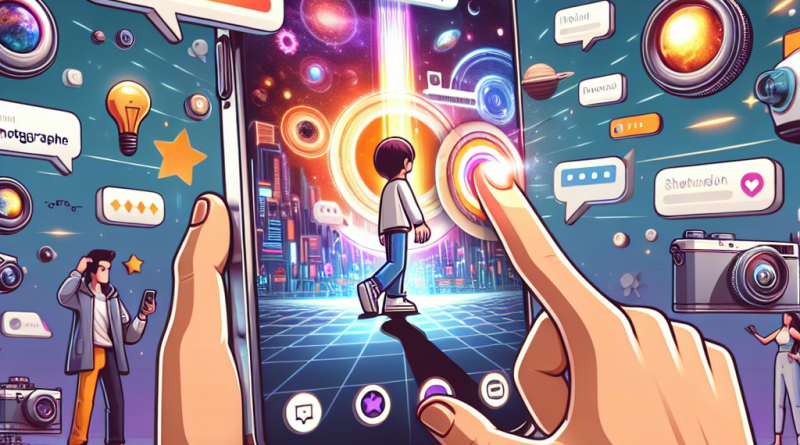Mastering iPhone Photography: A Real-World Guide to Capturing Stunning Shots After Switching to iPhone
Switching to iPhone isn’t just about upgrading to a new device—it’s about unlocking an entirely new photography experience. At iphone26.com, we don’t just test gear, we live it. In this post, I’m taking you on a personal journey—from PC-to-iPhone convert to passionate mobile photographer. This isn’t just a list of camera tips: it’s your real-world, scenario-based switching to iphone guide to mastering the digital magic packed into your iPhone’s lens.
Scenario 1: Capturing Fast-Moving Scenes—Sports & Action Photography
One of the first things I tried when I switched to iPhone was capturing my daughter’s soccer game. My DSLR had taken incredible action shots for years, so I was skeptical. But with my new iPhone set to “Burst Mode,” I simply held down the shutter as she sprinted toward goal. Later that evening, scrolling through the burst collection, I picked the perfect midair shot—cleats off the ground, ball inches from her foot. Clean, cinematic, and sharp. Unbelievable.
Here’s how you can do it:
- Open the Camera app and ensure “Live Photos” is off for greater burst control
- Tap and hold the shutter button to capture in Burst Mode
- Use the “Photos” app to select the frame where the motion peaks
Modern iPhones (particularly from the 13 series onward) process multiple frames using Smart HDR and Deep Fusion, freezing action crisply—even in challenging lighting.
Scenario 2: Golden Hour Landscapes—Travel & Nature in Perfect Light
On a recent weekend trip to Yosemite, I reached for my iPhone instead of my bulky mirrorless camera to capture Half Dome at sunset. With Photographic Styles and ProRAW, I knew I could manipulate highlights and shadows post-shot, so I focused purely on composition. Held at waist-level, framed with the gridlines, and timed with the golden-hour magic, the result needed no filters. That evening, I airdropped photos directly into Lightroom Mobile, and edited from the backseat of a Jeep.
To get that edge, remember:
- Enable Photographic Styles from the Camera settings beforehand—this lets you pre-define your editing mood
- Shoot in Apple ProRAW (available on Pro models) for maximal editing freedom
- Use the built-in leveling feature to avoid tilted horizon lines
The iPhone bridges classic rule-of-thirds composition with software enhancement so seamlessly, it might just replace your DSLR on your next trip.
Scenario 3: Low-Light Mastery—Food & Nightlife Photography
After switching to iPhone, my frustration with dimly lit restaurant dinner shots totally vanished. I remember ordering ramen at a cozy Tokyo bar at midnight… the lighting was atmospheric, but dim. In older smartphones, this would turn into a grainy mess. But my iPhone used Night Mode, and with one handheld click, I got a warm, moody shot that looked like it belonged in a food magazine.
Here’s what works:
- Let the iPhone auto-enter Night Mode (look for the moon icon in the corner)
- Hold still for the recommended duration (or steady it against a table or bag)
- Use Portrait Mode with Night Mode when photographing people in dim settings—it adds dreamy bokeh while enhancing facial detail
iPhones use LiDAR (in Pro models) to assist in low-light depth detection. You don’t need external lights or tripods anymore—iPhone’s camera effectively turns night into a stage for modern digital artistry.
Scenario 4: Portraits That Pop—Family and Street Photography
Street photography has always been a love of mine, but carrying a clunky camera down crowded London sidewalks drew too much attention. With iPhone, I blend into the scene, capturing candid portraits with Portrait Mode and Cinematic Mode. I once shot a street jazz saxophonist as sunlight streaked behind him. Framing low, tapping for focus, and letting Apple’s AI punch in subtle bokeh, I ended up with a layered, emotionally rich street portrait that instantly became my lock screen.
To replicate this:
- Switch to Portrait Mode and use the 2x telephoto lens (or 3x on later models) for flattering compression
- Tap-and-hold the subject’s face to lock focus and exposure
- Use natural light from behind for rim-lighting, then experiment with Portrait Lighting effects post-shot
The iPhone’s photographic depth API refines facial edges in Portraits now better than some DSLRs. It blurs distractions while preserving key textures—like eyes or beard detail—even in motion.
Scenario 5: Editing On-the-Go—From Raw to Wow
After years editing on desktop, I was shocked at how far mobile editing had come. I now use an iPhone workflow: shoot in ProRAW → import to Lightroom Mobile or Snapseed → tweak white balance, enhance shadows → export in full resolution. It’s ideal for digital content creators. I once edited an entire Instagram carousel on a train ride and hit publish before reaching my stop.
Try it yourself:
- Shoot in Apple ProRAW format (Settings > Camera > Formats > toggle Apple ProRAW)
- Download Lightroom Mobile or VSCO for advanced raw editing
- Preserve contrast and keep an eye on color tone—iPhone files retain excellent dynamic range
This is where digital meets art—you don’t need a MacBook to stay creative. The power sits in your palm.
Conclusion: The Future of Photography is Here, It’s Pocket-Sized
When I first began switching to iPhone, I didn’t expect it to overhaul my entire photography philosophy. But with each scenario—from fast-track sports to dimly lit ramen shops—it proved its brilliance over and over again. With tools like ProRAW, LiDAR depth, Cinematic stabilization, and on-device editing, the iPhone is no longer a compromise… it’s the camera at the center of creative evolution in the digital age.
Whether you’re a hobbyist or pro, there’s never been a better time to embrace mobile photography. And if you’re ready to take that shift, the switching to iPhone guide from iphone26.com is the blueprint to start with confident, creative mastery in every tap of your new lens.
For more digital lifestyle hacks and mobile-forward communication tools, be sure to check out www.conXhub.com—your next destination for seamless calling and number management innovation.

